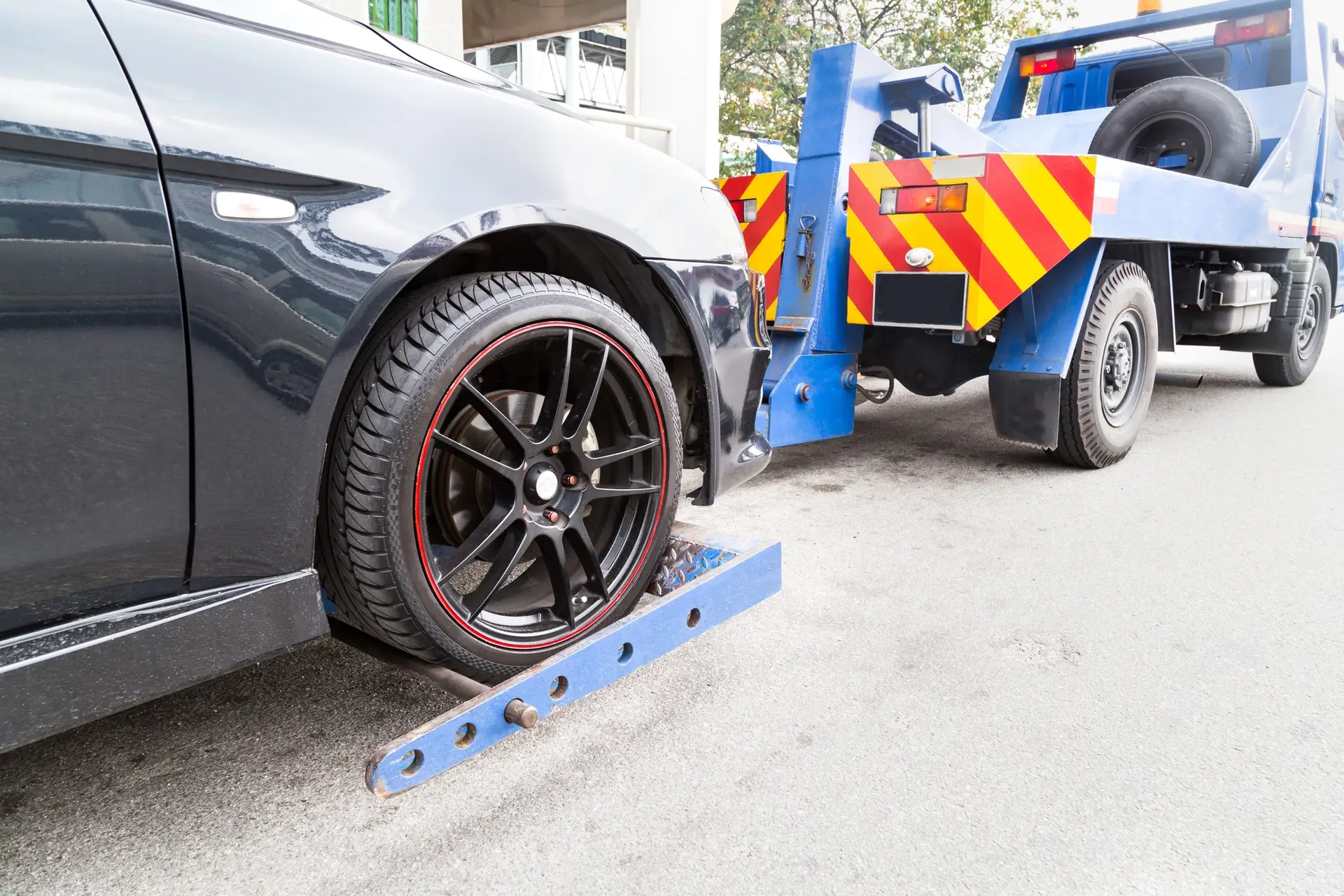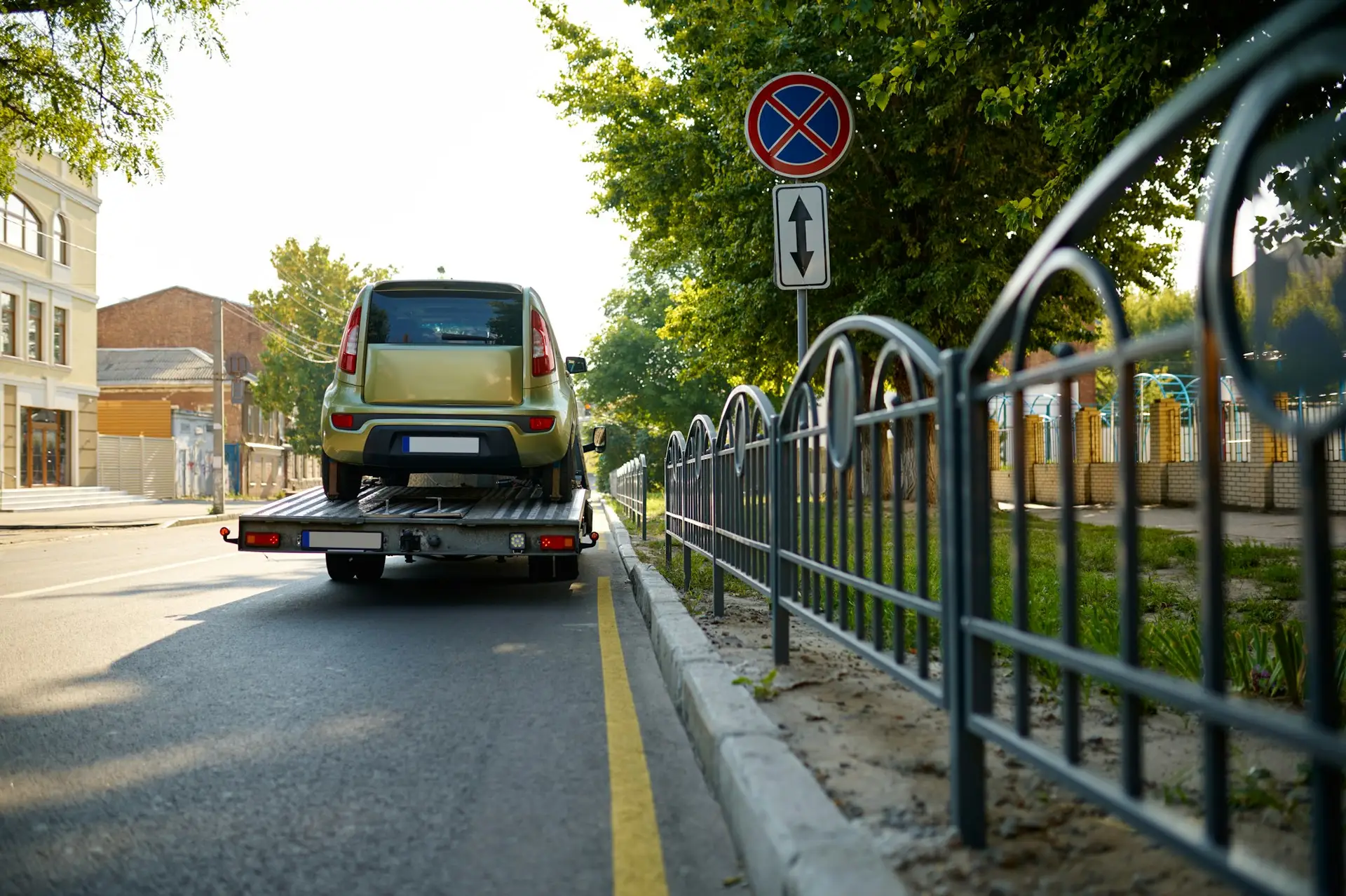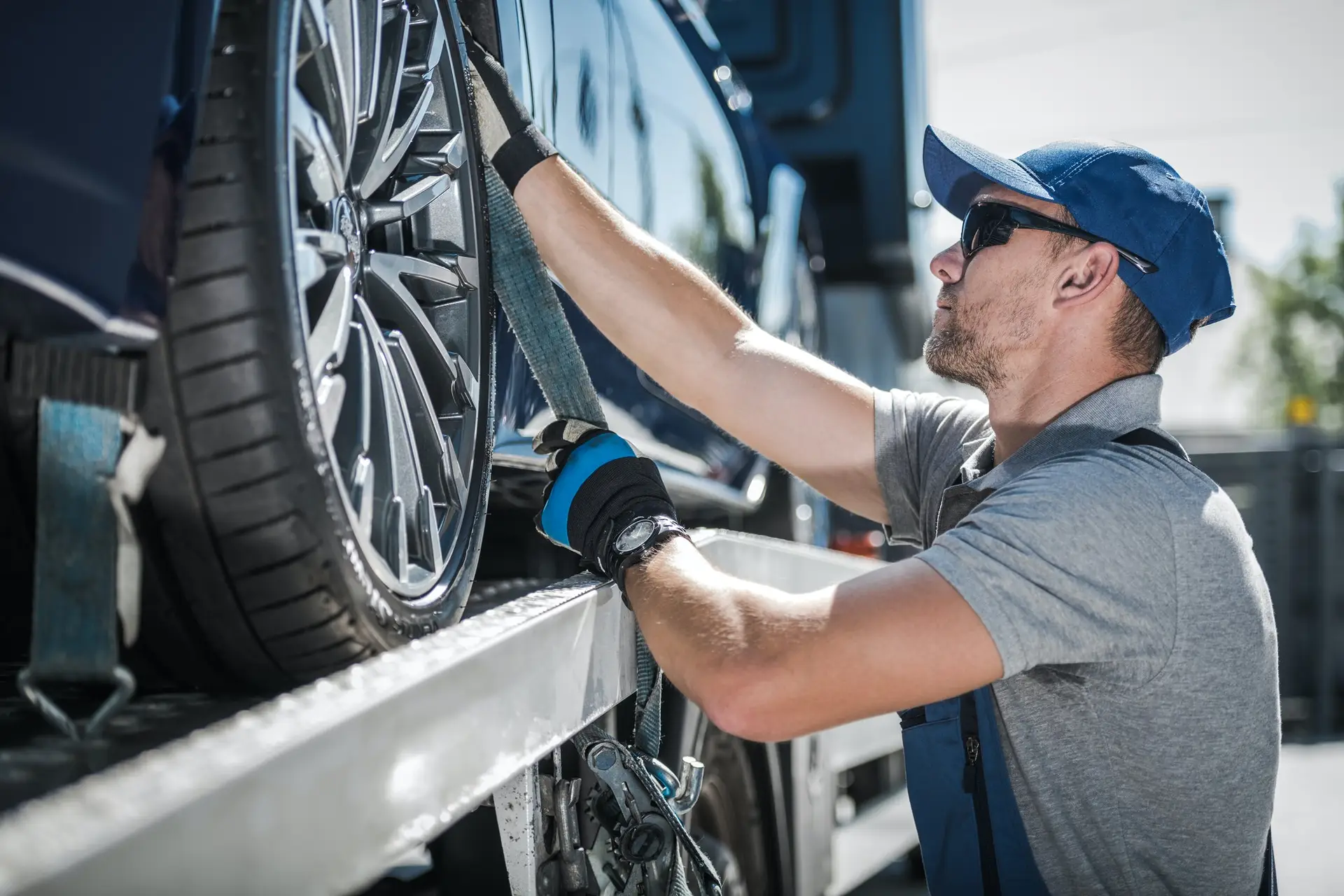“Can you drive on a flat tire?” How many times have you caught yourself thinking about this? Have you ever found yourself driving down a long, empty highway only to hear the hissing sound that turned out to be a flat tire? Yeah, we have been there, and we can completely sympathize with you. We have all found ourselves in such helpless circumstances where one of our tires gives out on us, and we are stranded in the middle of nowhere with no visible help. Not only are we left fuming, but also scratching our heads and tearing out our hair, thinking about how to escape such a situation.
Table of Contents
ToggleOne of the first thoughts that come to our mind is can I drive on a flat tire? We have all been guilty of pushing our luck, too. However, many experts caution against pulling such a stunt. Many aren’t aware of the repercussions and tend to occasionally drive on a flat tire and shrug away the apparent danger they put themselves and their co-passengers in – rhetorically wondering and asking the repairman, “Can you drive on a flat tire, we sure can, can’t we?”
Well, experts would beg to differ from you on this. And whenever they hear ‘Can you drive on a flat tire?’, they always respond with a resounding “no.” There are many reasons for experts’ equivocal rejection of this as a solution. In this article, we will help you understand why a flat tire exists. We will also offer tips on:
- How to fix a flat tire?
- How to change a tire?
- What are the tools to change a tire?
- Are there any emergency tire repair activities you can do?
Stick with us till the end, and we will take you through the essential dos and don’ts if you ever find yourself in a pickle with a flat tire.
Would you like to know what causes a flat tire?
What are the reasons for the tire to burst? Haven’t you wondered what caused it? There are many potential causes for a flat tire. Based on research on worldwide causes of a flat tire, we can safely surmise that your tire burst because of either a nail it drove over or a sharp rock getting stuck in between.
But do you know of other causes that can also strand you? We should get our basics right before learning the answer: can you drive on a flat tire? Not a lot of people are aware of the following causes of a flat tire:
Other sharp objects like pieces of glass, metal, or even debris can cause a flat tire, especially when driving near construction areas, garbage dumps, and different problem zones.
Your car can get a flat tire if you regularly drive on poor, uneven roads full of potholes. They contribute to your tire deflating and can even ruin your vehicle’s undercarriage.
It is not only about ‘can you drive on a flat tire’; you also need to know what may cause a flat tire in the first place. Car tires have been known to go flat even due to improper inflating. This happens when there is an incorrect tire pressure level. This can result in damage even to the internal component of your tire.
Sometimes, the car tire gets flat due to overuse and the regular wear and tear that comes with it.
Another exciting reason why car tires blow is because of heat. It’s not commonly discussed, but heat can also be one of the most severe reasons your tire goes flat. With heat, there is a tendency for the air in the tires to expand, which causes internal pressure, resulting in either a leak or the tire blowing out.
One last reason is for the valve stem component to be faulty or damaged, causing leakage.
None of these causes and situations described above are the ideal place to discover the answer: Can you drive on a flat tire? We are getting there, but before that, we would like to add more value to your knowledge.
What should you do to avoid a flat tire?
We will answer the question – can you drive on a flat tire soon? But before that, we need to shed some light on what you can do to avoid getting a flat tire. Now that you know the various reasons for a flat tire, let’s see what simple measures you can take to prevent them.
Avoid: You read that right. The first step, most definitely, is to avoid it. Avoid bad roads, under-construction sites, and areas where garbage and debris are strewn around. AAvoid any stretch of road that poses a potential threat of blowing your tire.
Take care: But sometimes it is just impossible to avoid specific routes. In such cases, what you can do is take care while maneuvering your car across those roads. The answer to Can you drive on a flat tire might be “maybe,” but Can you drive carefully always answers with a thumping “yes.”
Evaluation: Always do a preliminary assessment before every ride. Check whether the tire shows appropriate inflation. See if all the valve stems seem okay. Ensure no sharp objects are lying around your vehicle, as a stationary vehicle is also at risk from stray objects carelessly tossed by someone else.
Checkups: Make routine checkups a part of your life. Ensure you regularly check the overhaul of your vehicle, especially the tires. With age, you will find the tires need to be more reliable. Therefore, have a system of checks and fixes to avoid being caught on the wrong feet or tire.
Backup: The last piece of advice we have for you is always to have a backup. Every automobile has enough boot space for a spare. Make use of that space. Always have a spare tire. Also, always carry tools for a quick tire change if you need to do it yourself.
Learn how to fix a flat tire.
Imagine you find yourself in a situation where there is a car breakdown. Your tire has run out on you and is lying there useless and flat. How to fix a flat tire? This is one skill that all driving enthusiasts swear is a lifesaver.
We will help you learn how to change a tire if caught with a flat tire. Follow these steps in order, and that will help you clean up the mess.
One of the first things to ensure is you have all the right tools to change a tire. Be sure you don’t miss any of these tools, as they will help you out of a sticky situation in the future if it ever comes to that.
- Car Jack
- Lug Wrench
- A spare tire
- A car owner’s manual
- A bracing material (optional)
All these are much-needed tools to change a tire, except the last one, which you can always substitute with a brick or a log lying nearby.
Can you drive on a flat tire, or shall we teach you how to change a tire?
After taking out all the tools you need to change the flat tire, follow these steps to remove it.
Be sure to park the car on the side of the road. It would be best if you gave a wide berth to the speed demons cruising our streets.
- Put up the parking signals or hazard lights.
Brace the front and back wheels to prevent your car from rolling and ensure stability. - Position the car jack so that it will not cause additional damage to the car. And gently but firmly jack up the vehicle. Make sure you are not overdoing it; raise the car enough for you to remove the flat tire.
Remove the hubcaps, as they are commonly called, or those center plates that are always found on all car tires. - Now, bring out the lug wrench and start removing all the nuts. Rotate them counterclockwise to loosen them enough. You might be required to strain yourself a little as those lug nuts are tightened exceptionally well. So, exercise those muscles a little, then pull or push whichever suits you to pry loose the lug nuts.
- Once you have looped the lug nuts, you are done with one of the most strenuous activities of changing a flat tire. You can now begin by removing the flat tire.
- Next comes the process of attaching the spare tire. Look at this as a reverse of what you did. That means going precisely the opposite of what you did to remove the flat tire.
- Once you place the spare tire in position, you can return all the lug nuts first. Turn each lug nut clockwise to tighten them into their slots. Ensure you use maximum force to pull and fix them. We do not want to find them coming to loose and being the cause of accidents.
- If the spare car has a hub cap, deposit the flat tire and assortment of tools back into the boot. If there is no hub cap on the spare tire, try covering the lug nuts with the hub nut you removed from the flat tire. See if it fits perfectly. We don’t want them falling off as we drive away.
- The last step is removing all the braces, driving a short distance, stopping, parking, and checking if the lug nuts you tightened are still there and holding fort.
Are there any emergency tire repair activities you can do?
What we will share next might help you avoid the long-drawn tire change process. But a few circumstances must align perfectly to get the best out of it. Our first advice is to change the flat tire. But in the rare case that you do not have a spare tire or the tools, then as an emergency, ensure you do one of these:
Reach for the phone and find out if there is an emergency tire repair shop or service nearby. Entrust them to service your flat tire or tag you to the nearest repair shop. But be warned that you might have to wait a bit as they might take their sweet time.
See if you have something which will act as a temporary solution. Based on the problem’s severity, sometimes we could drive again on a flat tire if we temporarily stem the problem. We are discussing a temporary tire sealant often found in the emergency tire repair kit. Though not a permanent or long-term solution, it will ensure you reach your destination or even the nearest garage with minimal issues. Of course, you must spend some money on the sealant and the inflator. But it is better than remaining stranded in an alien land.
Finally, can you drive on a flat tire?
The answer is it depends. But also, there will be repercussions. Driving on a flat tire is hazardous to you, the driver, and your co-passengers. So, if you go on a flat tire because “hey, the destination is so close” know that it can impact you physically and financially.
You read that right, dear reader. The answer to Can you drive on a flat tire depends on whether you will be able to bear the cost of repairing a potentially damaged and shredded tire, damaged wheel, damaged wheel studs, fenders, brakes, and even suspensions as the impact can be transferred to all these parts. So, if you find yourself in that situation, avoid driving on a flat tire.






